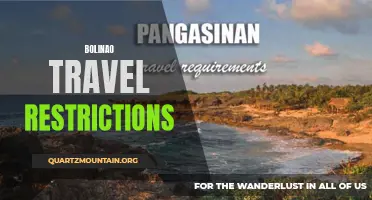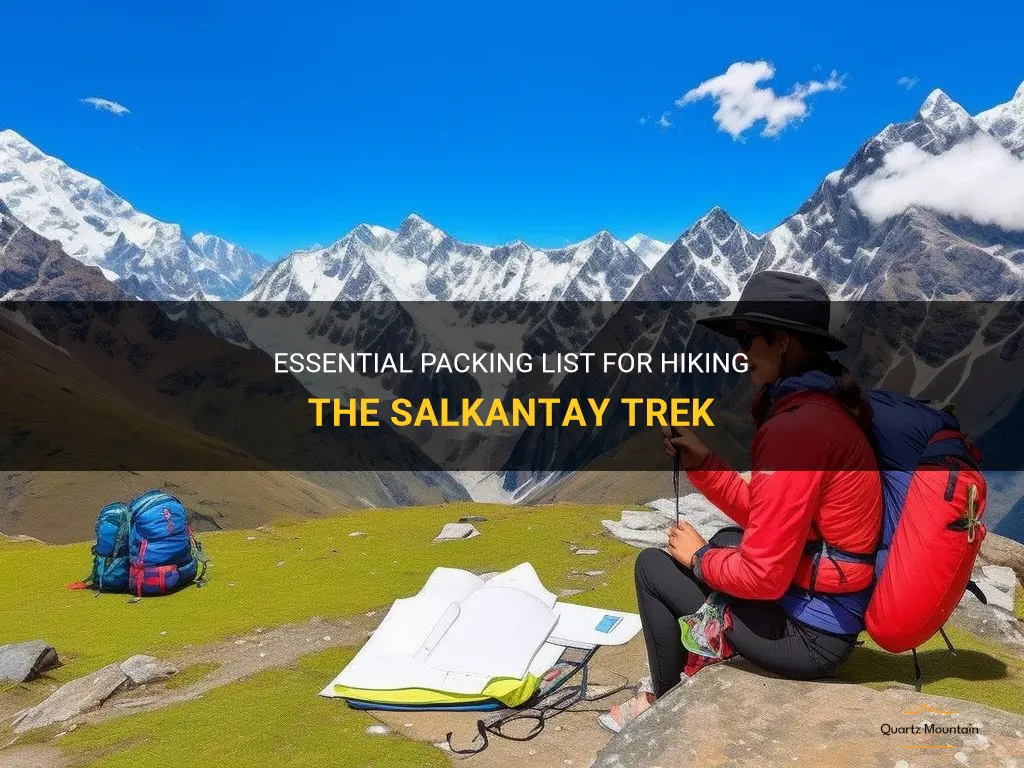
If you're an adventure seeker planning to hike the stunning Salkantay Trek in Peru, then you're in for a truly unforgettable experience. But before you embark on this incredible journey through the Andes mountain range, it's crucial to pack your bags with the essentials that will ensure your comfort and safety along the way. In this article, we will guide you through the must-have items that should make it onto your packing list for hiking the Salkantay Trek. From sturdy hiking boots to warm layers and essential gear, we've got you covered. So, get ready to embark on an adventure of a lifetime equipped with all the necessities!
| Characteristics | Values |
|---|---|
| Duration | 4-6 days |
| Difficulty | Moderate to challenging |
| Altitude | 4600 meters (highest point) |
| Weather | Varies from hot and humid to cold and windy |
| Required Gear | Comfortable hiking boots, backpack, hiking poles, etc. |
| Clothing | Layered clothing (including waterproof and warm layers) |
| Sleeping | Sleeping bag, sleeping pad, and possibly a tent |
| Food | Pack enough snacks and meals for the duration of the trek |
| Water | Carry water bottles or a water purification system |
| First Aid | Basic first aid kit including any necessary medications |
| Permits | Ensure you have all required permits and IDs |
| Training | Prepare physically and mentally for the trek |
What You'll Learn
- What essential items should I pack for a Salkantay Trek hike?
- Are there any specific clothing items or gear that are recommended for the Salkantay Trek?
- How much water should I pack for the hike, and are there any water purification methods recommended?
- Are there any additional items or gear that are useful to have on the Salkantay Trek?
- Are there any specific food items or snacks that are recommended for the hike?

What essential items should I pack for a Salkantay Trek hike?
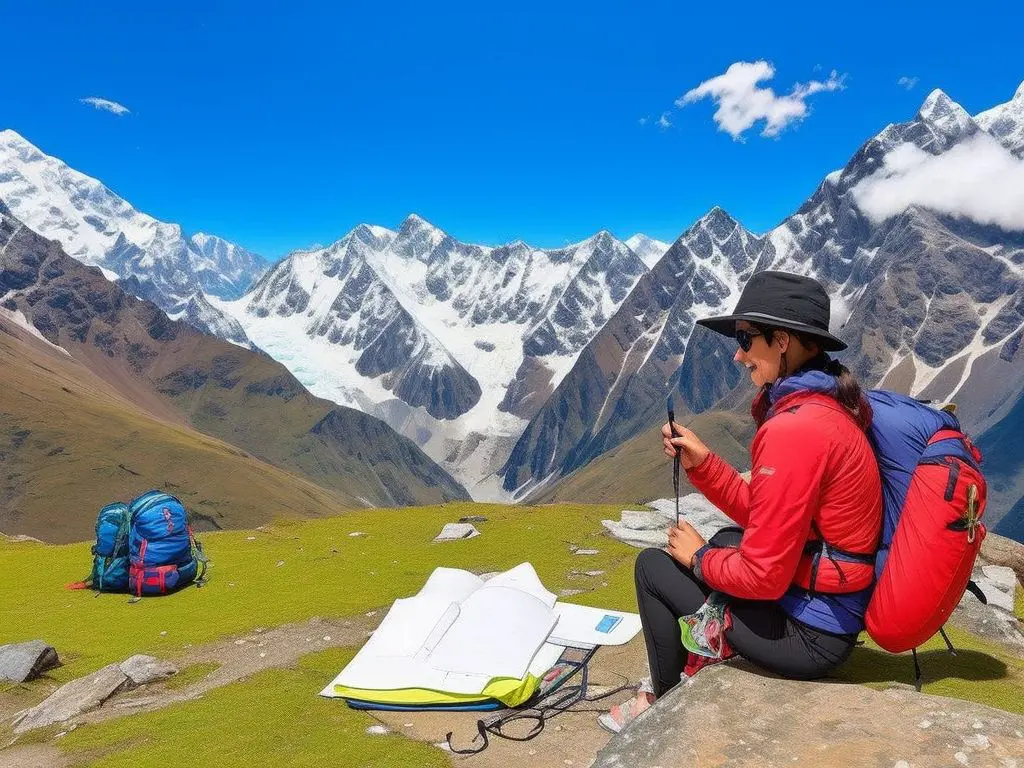
The Salkantay Trek is a famous hiking route in Peru that takes trekkers through breathtaking mountain landscapes and culminates at the ancient Inca city of Machu Picchu. This challenging trek requires proper planning and packing to ensure a safe and comfortable journey. Here are the essential items that you should pack for a Salkantay Trek hike:
- Backpack: A good-quality backpack is essential for carrying all your gear during the trek. Choose a backpack with adjustable straps and a hip belt for maximum comfort. Ensure that it has enough capacity to hold all your essentials.
- Hiking boots: Invest in a pair of sturdy hiking boots with ankle support. The terrain on the Salkantay Trek can be rugged and uneven, so it is crucial to have proper footwear for stability and to prevent injuries.
- Sleeping bag: The nights on the Salkantay Trek can get cold, especially at higher altitudes. Bring a warm sleeping bag that is suitable for sub-zero temperatures. It's worth investing in a lightweight and compact sleeping bag to save space in your backpack.
- Layered clothing: The weather can change quickly on the Salkantay Trek, so it's essential to pack layered clothing. A moisture-wicking base layer, insulating mid-layer, and waterproof outer layer are recommended. Include items like thermal underwear, fleece jackets, and a rain jacket to prepare for various conditions.
- Trekking poles: Trekking poles provide stability and help reduce strain on your knees while hiking. They are especially useful when navigating steep and uneven terrain. Look for adjustable poles that can be easily packed when not in use.
- Water purification tablets: Clean drinking water may not always be readily available during the trek, so it's crucial to have a reliable water purification method. Pack water purification tablets or a water filter to ensure that you have access to safe drinking water throughout the journey.
- First aid kit: A well-stocked first aid kit is essential for any trek, including the Salkantay Trek. Include items such as bandages, antiseptic ointment, pain relievers, and blister treatments. It's also advisable to bring any personal medications you may need.
- Sun protection: The high altitude and strong sun on the Salkantay Trek make sun protection a must. Pack sunscreen with a high SPF, a wide-brimmed hat, sunglasses, and lip balm with sun protection. Consider bringing a lightweight long-sleeved shirt and pants to protect your skin from the sun.
- Snacks and energy food: The Salkantay Trek is physically demanding, and you'll need to keep your energy levels up during the hike. Pack high-energy snacks such as trail mix, energy bars, and dried fruit. Don't forget to include some chocolate or other treats for a morale boost when needed.
- Camera and extra batteries: The Salkantay Trek offers incredible scenic vistas that you'll want to capture. Bring a camera and extra batteries to document your journey. Consider bringing a portable charger for your electronic devices, as there may not be regular access to electricity.
These are some of the essential items to pack for a Salkantay Trek hike. Remember to pack only what you need to keep your backpack as light as possible. Prioritize comfort, safety, and practicality when selecting your gear to ensure an enjoyable and successful trekking experience.
The Essential Packing List for a Memorable 1 Week Stay in Seattle
You may want to see also

Are there any specific clothing items or gear that are recommended for the Salkantay Trek?
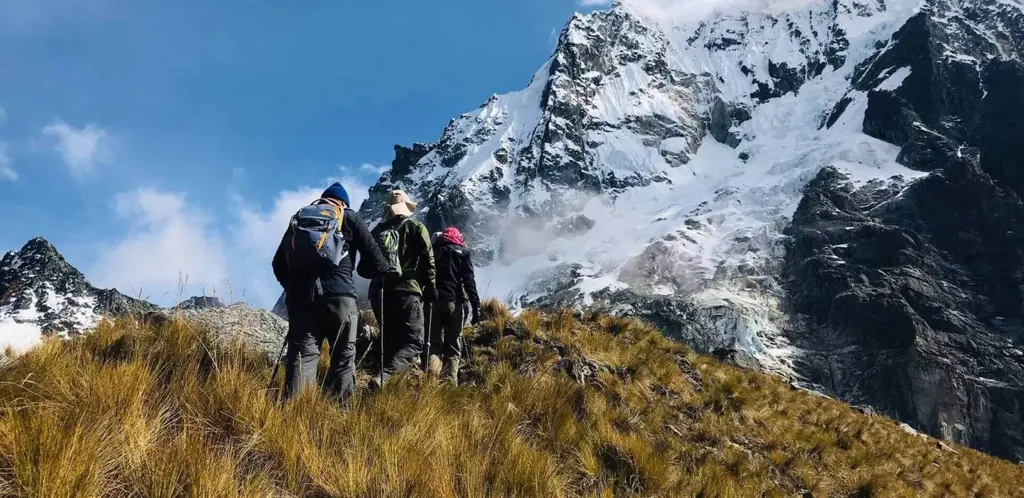
The Salkantay Trek is a famous trekking route in the Cusco region of Peru. It is a challenging yet rewarding trek that takes you through stunning mountain scenery, diverse ecosystems, and ancient Inca ruins. If you are planning to embark on this adventure, it is important to come prepared with the right clothing items and gear. In this article, we will discuss some of the recommended clothing items and gear for the Salkantay Trek.
- Hiking Boots: A good pair of hiking boots is essential for the Salkantay Trek. The terrain can be rough and uneven, with steep ascents and descents. Invest in a pair of waterproof and sturdy boots that provide ankle support to prevent sprains and blisters.
- Lightweight, Quick-drying Clothing: It is recommended to pack lightweight, moisture-wicking clothing that dries quickly. This will help regulate your body temperature and keep you comfortable during the trek. Pack a mix of long and short-sleeved shirts, hiking pants or shorts, and a waterproof jacket.
- Thermal Layers and Fleece: The Salkantay Trek takes you through high-altitude regions where temperatures can drop significantly. Layering is key to staying warm and comfortable. Pack thermal base layers, fleece jackets, and a warm hat to protect yourself from the cold.
- Rain Gear: The weather in the mountains can be unpredictable, and rainfall is common. Pack a quality rain jacket and rain pants to stay dry during wet weather. Make sure they are lightweight and breathable to avoid overheating.
- Sleeping Bag: The Salkantay Trek involves camping in tents along the way. A good quality sleeping bag suitable for the expected temperatures is essential for a restful night's sleep. Look for a lightweight and compact sleeping bag that can withstand low temperatures.
- Daypack: A comfortable daypack is crucial for carrying your essentials during the trek. Look for a pack with padded straps and a waist belt for added support. Make sure it is large enough to hold water, snacks, a camera, and extra layers of clothing.
- Trekking Poles: Trekking poles can provide stability and support, especially during steep descents. They help distribute the weight of your pack and lessen the strain on your knees. Consider investing in a pair of lightweight and collapsible trekking poles for added convenience.
- Hat and Sunglasses: Protect yourself from the strong sun rays at high altitudes by wearing a wide-brimmed hat and sunglasses. This will help prevent sunburn and protect your eyes from UV rays.
- Hydration System: Staying hydrated is crucial during the Salkantay Trek. Carry a hydration bladder or water bottles that are easy to access while hiking. Consider using water purification tablets or a water filter to refill your water supply from natural sources.
- First Aid Kit: It is always advisable to carry a basic first aid kit that includes essentials such as bandages, blister pads, antiseptic ointment, pain relievers, and any personal medications you may need.
Remember, the Salkantay Trek is a physically demanding and high-altitude trek. It is important to acclimatize properly, stay hydrated, and pace yourself. Following these recommendations for clothing items and gear will help ensure a more comfortable and enjoyable trekking experience.
Essential Items to Pack for Your Trip to Sweden
You may want to see also

How much water should I pack for the hike, and are there any water purification methods recommended?
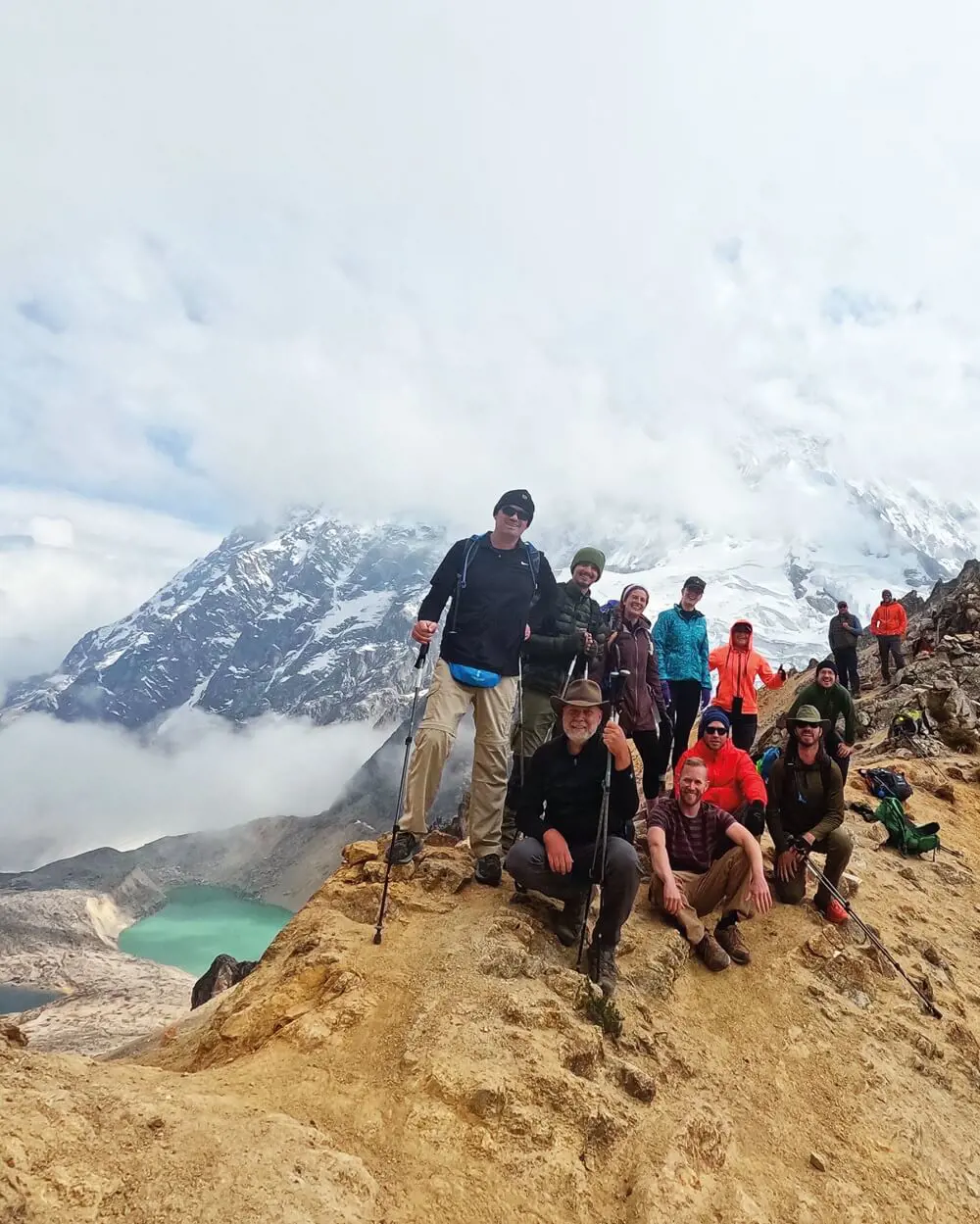
When planning a hike, it is crucial to ensure that you have enough water to stay hydrated throughout the journey. The amount of water you need to pack will depend on various factors such as the distance of the hike, the weather conditions, and your own personal hydration needs.
As a general guideline, it is recommended to drink at least 2 liters (about half a gallon) of water per day. For a day hike, you can start by packing 2-3 liters (or more if you tend to drink a lot) of water per person. Remember that it is always better to have more water than you think you will need, as unexpected situations can arise.
If you are going on a longer hike or camping overnight, you may need to bring even more water or explore alternative water sources along the trail. In such cases, it can be helpful to research the availability of natural water sources such as streams or lakes where you can refill your water bottles or use water purification methods.
Water purification is essential when drinking water from natural sources to avoid consuming harmful bacteria, parasites, or viruses. Here are some recommended water purification methods for hiking:
- Boiling: Boiling water for at least one minute is one of the most effective ways to kill most microorganisms. It is a simple and reliable method, but it does require a heat source and time to cool down before drinking.
- Filtering: Water filters with micron-sized pores can remove most bacteria and protozoa. Look for filters that meet the Environmental Protection Agency (EPA) standards for water purification. It's important to check the manufacturer's instructions for proper usage and maintenance of your filter.
- Chemical treatment: There are various chemical treatments available for water purification, such as iodine tablets or chlorine dioxide drops. These chemicals work by killing or inhibiting the growth of microorganisms. Follow the instructions provided with the specific product to ensure effective treatment.
- UV radiation: UV water purifiers use ultraviolet light to kill bacteria, viruses, and other pathogens. These devices are compact and easy to use, but they rely on batteries or electricity to function.
It is worth mentioning that water purification methods are not foolproof, and it is still advisable to be cautious and use your judgment when consuming water from natural sources. If water sources are limited or unreliable, it may be necessary to carry additional water or consider alternative methods such as water bladder systems or water storage containers.
In addition to packing enough water and utilizing water purification methods, it is important to stay hydrated by sipping water regularly throughout the hike. Don't wait until you feel thirsty to drink, as thirst is a late indicator of dehydration. Remember to take regular breaks, seek shade when possible, and dress appropriately for the weather conditions to avoid excessive sweating and water loss.
By packing an adequate amount of water and employing proper water purification methods, you can ensure a safe and enjoyable hiking experience while maintaining optimal hydration levels.
The Essential Packing List for a Week in Southern Utah
You may want to see also

Are there any additional items or gear that are useful to have on the Salkantay Trek?
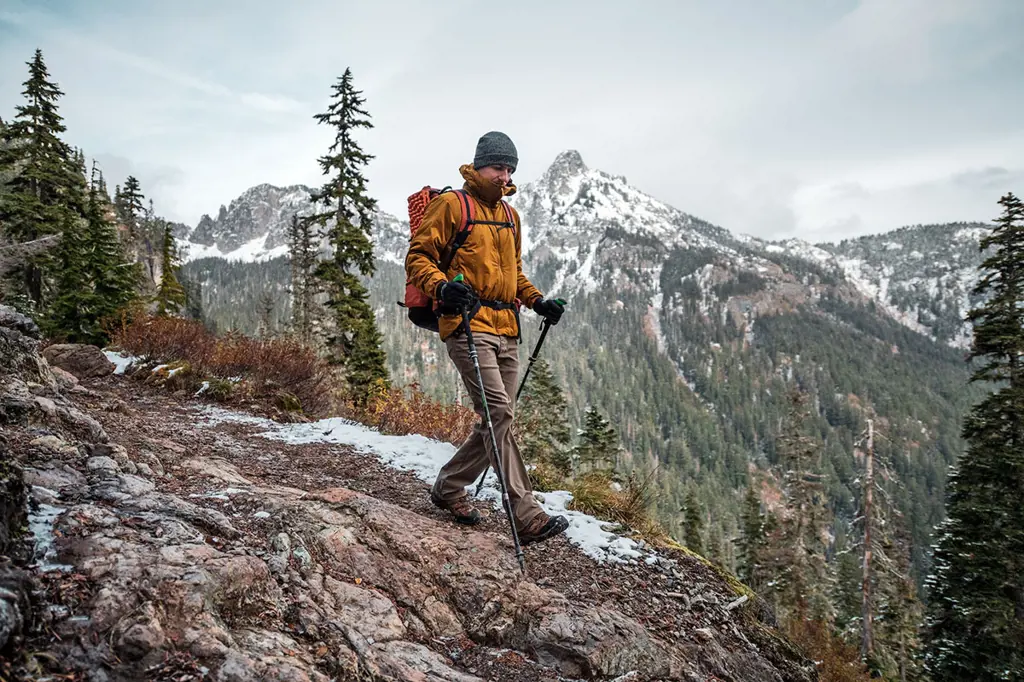
When preparing for the Salkantay Trek, it is important to have all the necessary gear and items to ensure a safe and enjoyable experience. While the basic packing list includes essential items such as hiking boots, warm clothing, a sleeping bag, and a backpack, there are a few additional items that can come in handy during the trek.
One of the most important additional items to have on the Salkantay Trek is a good quality pair of trekking poles. These poles provide extra stability and support while navigating the challenging terrain. They help to reduce the strain on your knees and lower body, especially when descending steep slopes or crossing rocky areas. Trekking poles also improve balance and can prevent slips or falls, especially in wet or muddy conditions. Investing in a durable and lightweight pair of trekking poles is well worth it for this demanding trek.
Another useful item to have is a portable water filter or purifier. The Salkantay Trek takes you through remote areas where clean drinking water may not always be readily available. Carrying a portable water filter or purifier allows you to safely drink water from natural sources such as streams or rivers along the way. This not only saves you money but also reduces the need for single-use plastic bottles, promoting sustainable trekking practices.
A good quality rain cover for your backpack is also essential for the Salkantay Trek. The weather in the Andes can be unpredictable, and rain showers are common throughout the year. Having a rain cover protects your backpack and its contents from getting wet, ensuring that your gear stays dry and functional. It is advisable to choose a rain cover that is waterproof and easily adjustable to fit different backpack sizes.
Additionally, packing a first aid kit with essential items such as bandages, antiseptic ointment, blister pads, and pain relievers is highly recommended. While there are emergency services available along the trail, having a basic first aid kit allows you to attend to minor injuries or ailments promptly. It is also advisable to carry any prescription medications you may need during the trek, along with a copy of your prescription.
Lastly, a headlamp or flashlight is essential for the Salkantay Trek. It is not uncommon to start hiking early in the morning or to reach the campsite after sunset. Having a reliable light source allows you to navigate safely in low light conditions and makes it easier to set up your tent or find your way to the bathroom facilities at night. Opt for a lightweight and durable headlamp with adjustable brightness settings.
To sum up, while the standard packing list for the Salkantay Trek covers the basic essentials, there are a few additional items that can greatly enhance your trekking experience. Trekking poles, a portable water filter, a rain cover for your backpack, a first aid kit, and a headlamp are all valuable items to have. These items contribute to your safety, comfort, and overall enjoyment on this challenging and rewarding trek in the Peruvian Andes.
Essential Items to Pack for Visiting Niagara Falls: A Comprehensive Guide
You may want to see also

Are there any specific food items or snacks that are recommended for the hike?

When going on a hike, it is important to fuel your body with the right types of food to keep you energized and satisfied throughout the day. While there is no one-size-fits-all answer to what snacks or food items you should bring on a hike, there are some general recommendations that can help guide your choices.
First and foremost, it's important to pack foods that are lightweight, easy to carry, and non-perishable. This is especially important for longer hikes or hikes in hot weather where food spoilage can be a concern. Snack bars, such as granola bars or energy bars, are a popular choice as they are compact, lightweight, and provide a good balance of carbohydrates, protein, and fats. Look for options that are made with whole, natural ingredients and minimal added sugars.
In addition to snack bars, trail mix can be a great option for hiking. It is a mix of nuts, seeds, dried fruit, and sometimes chocolate or other sweet treats. Trail mix provides a good combination of healthy fats, protein, and carbohydrates to keep you fuelled on the trail. You can easily make your own trail mix by combining your favorite nuts, seeds, and dried fruits.
Fresh fruits such as apples, oranges, or bananas can also be a great addition to your hiking snacks. They are lightweight, don't require any preparation, and provide a good source of natural sugars and hydration. Just be sure to pack them safely so they don't get squished or damaged in your backpack.
If you prefer something savory, jerky or beef sticks can be a good option. They are high in protein and can help replenish your energy levels. Just make sure to choose options that are low in sodium and free from added preservatives or artificial ingredients.
For longer hikes or hikes in hot weather, electrolyte-replenishing snacks such as sports drinks, electrolyte powder packets, or electrolyte gummies can be beneficial to help keep you hydrated. These can help replenish essential minerals, such as sodium, potassium, and magnesium, that are lost through sweat.
In addition to snacks, it's important to stay hydrated throughout your hike. Be sure to pack plenty of water or a water filtration system to refill your water bottle along the way. Staying properly hydrated can help prevent fatigue, muscle cramps, and heat-related illnesses.
Ultimately, the best snacks for a hike will depend on your personal preferences, dietary restrictions, and the specific demands of your hike. It's always a good idea to pack a variety of snacks to keep your taste buds satisfied and to ensure you have options that provide a balance of carbohydrates, protein, fats, and hydration.
In conclusion, when planning for a hike, it's important to choose snacks and food items that are lightweight, easy to carry, and provide the necessary nutrients to sustain your energy levels. Snack bars, trail mix, fruits, jerky, and electrolyte-replenishing snacks are all popular choices. Don't forget to stay hydrated by packing plenty of water and electrolyte-replenishing beverages. Happy hiking!
Essential Items to Pack for a Memorable Summer Trip to Mount Rushmore
You may want to see also
Frequently asked questions
When packing for the Salkantay Trek, it's important to pack lightweight and functional clothing, as well as essential hiking gear. You'll want to pack a waterproof jacket, warm layers for the cold nights, and quick-drying pants and shirts. Don't forget to bring a hat, gloves, and sunscreen to protect against the sun. It's also crucial to have a sturdy pair of hiking boots, a comfortable backpack, and a lightweight sleeping bag.
No, you do not need to bring your own food for the Salkantay Trek. The tour operators and guides usually provide meals throughout the trek. However, it's always a good idea to bring some snacks, such as energy bars or trail mix, to keep you fueled during the hike.
It is not necessary to bring a water filter or purification tablets for the Salkantay Trek. The tour operators usually provide safe and clean drinking water throughout the trek. However, if you prefer, you can bring your own water filter or purification tablets as a precaution.
There are a few items that you should avoid bringing on the Salkantay Trek. It is recommended not to bring unnecessary valuables, such as expensive jewelry or electronic devices, as they can be easily lost or damaged during the hike. Additionally, it's best to leave behind heavy items that will weigh you down, including extra clothes or unnecessary gear. It's important to pack light and only bring what is necessary for the trek.


